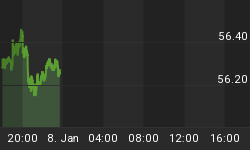The good news is:
Many indices including the S&P Mid cap index hit a new cycle highs last week.
New lows remain at unthreatening levels on both the NYSE and NASDAQ.
The NYSE advance decline line (ADL) hit a new cycle high last Thursday.
Until just a few years ago a new high in the NYSE ADL would have meant small cap issues were leading the advance, and the market was in good shape. In the early 90s Justin Mamis pointed out the quality of this indicator may be deteriorating because of the increasing number of fixed income related issues traded like stocks on the NYSE. As long as stocks and bonds moved together the NYSE ADL continued to work well. The NYSE ADL has always had a slightly negative bias so it would deteriorate at tops ahead of the blue chip indices giving us one of the best leading indicators of market tops.
The problem is since October 1998, stocks and bonds have been out of synch. In the chart below which shows the past 10 years the red line represents the Shearson Lehman Treasury long bond index and the green line the S&P 500. The gray line is moving correlation, that is the percentage of 5 day periods in the past 40 trading days that both indices moved in the same direction (the indicator is calculated daily). You can see correlation held at about 75% until late 1997 and appears to have trended downward ever since. Correlation for the past 40 trading days is 23%.

I have seen estimates recently that as much as 50% of the issues traded on the NYSE are fixed income related. All of this explains why a new cycle high in the NYSE ADL is not as positive as it was 5 years ago and why breadth based timing models based on NYSE data have failed in the past 5 years.
The bad news is:
The current "soft patch" does not appear to be over.
The two charts below show the same indicators calculated from the components of The Russell 2000 (R2K) and the S&P 500 (SPX). On both charts the middle line is neutral for both indicators. Recently direction has been more important than level.
The indicators are Net Field Trend (NFT) (blue line) which is the percentage of issues with On Balance Volume (OBV) in a positive trend. OBV is calculated by adding the volume of an issue to a running total when the issue is up for the day and subtracting volume from the running total when the issue when the issue is down for the day. When the most recent two highs and two lows of OBV are higher the trend is positive then they are lower, the trend is negative, when neither pattern can be identified the trend is neutral. The green line represents momentum of an oscillator of new highs and new lows calculated over the trailing 6 weeks rather than 52 weeks as reported by the exchanges.
The first chart shows the R2K with the indicators calculated from its component issues. The second chart shows the SPX with the indicators calculated from its component issues.


In the R2K chart both indicators are above their neutral line, but heading downward. In the SPX chart both indicators are in negative territory and heading downward. Both charts show a cyclic rhythm that has been well defined for the past two months. Right now that rhythm is still in a down swing.
I expect the major indices to be lower at the close on Friday November 21 than they were at the close Friday November 14.
Thank you,
















